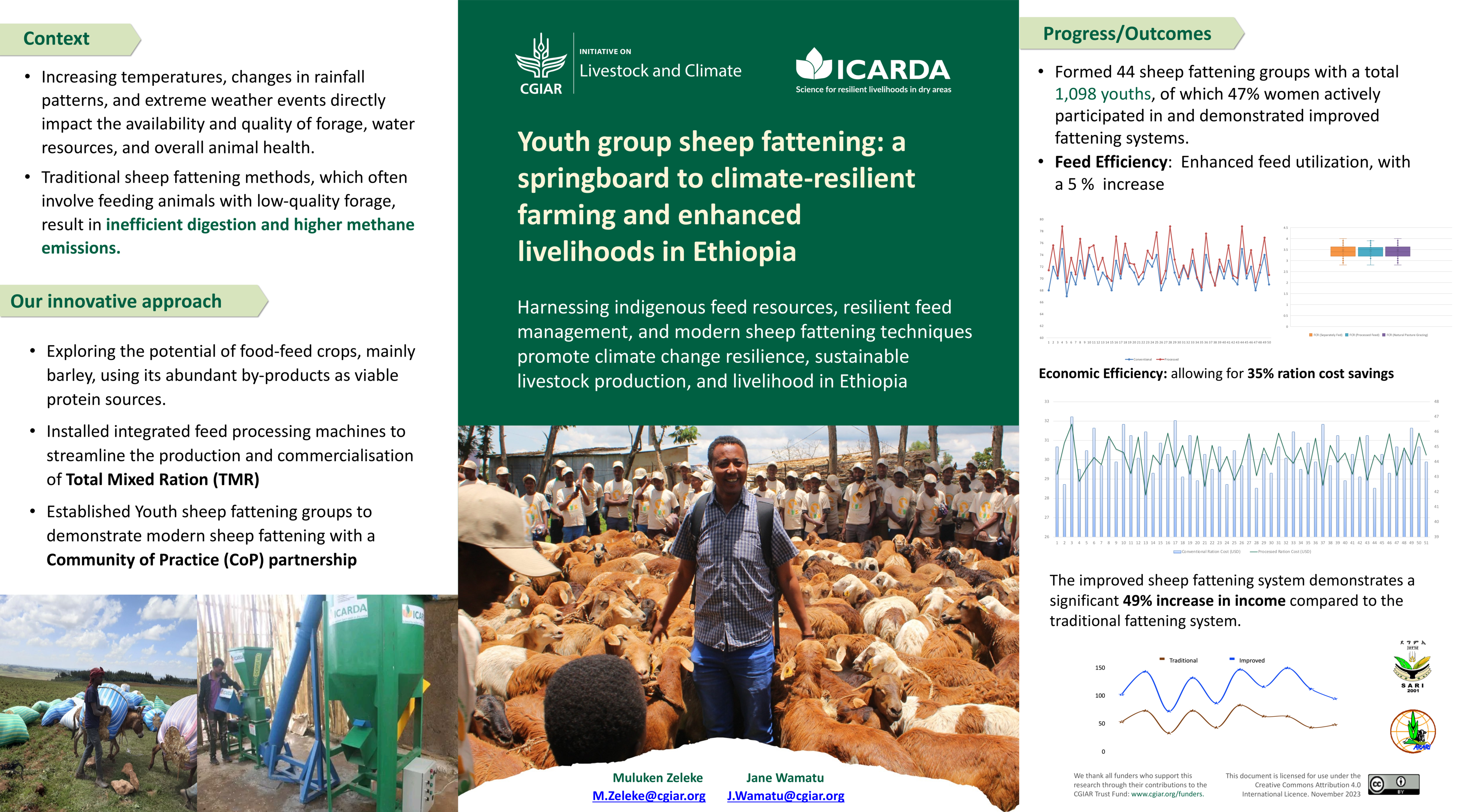
Description
Description
Harnessing indigenous feed resources, resilient feed management, and modern sheep fattening techniques promote climate change resilience, sustainable livestock production, and livelihoods in Ethiopia.

Harnessing indigenous feed resources, resilient feed management, and modern sheep fattening techniques promote climate change resilience, sustainable livestock production, and livelihoods in Ethiopia.
Comments
what is the difference between the new ration and the traditional one?
Instead of the traditional grazing methods, did you also made a treatment consisting of feeding the sheeps with improved forages rather than feeding concentrates?
- how does the feed cost savings was obtained?
What is the sustainability of the sheep fattening groups post project, and how can we scale without considerable external interventions?
How do you link to technologies and service providers such as mechanization/fodder conservation?
How long have the youth groups been going and how do you maintain enthusiasm if no immediate profit?
How do you formulate the TMR and ensure that this can be carried out in the future?
Sawsan Hassan
what is the difference between the new ration and the traditional one?
The new ration is Total Mixed Ration(TMR), mainly from the by-products derived from barley-based local food and beverages, such as Areke Atella (with a crude protein content of 18.7%), Tella Atella (crude protein content of 21.2%), and brewery spent grain (crude protein content of 23.7%), exhibit an In vitro dry matter digestibility ranging from 58% to 70%. And also Barley Straw. These by-products represent an economical, sustainable, alternative protein source for sheep fattening in mixed farming systems.
Add new comment